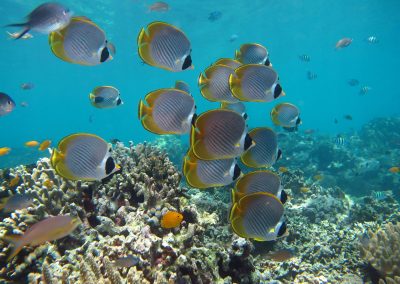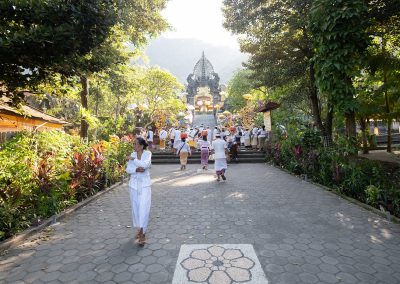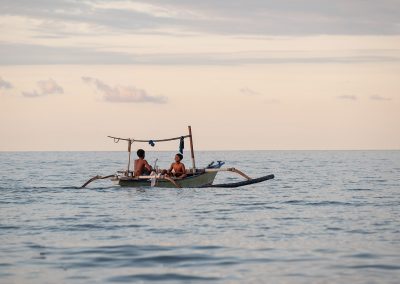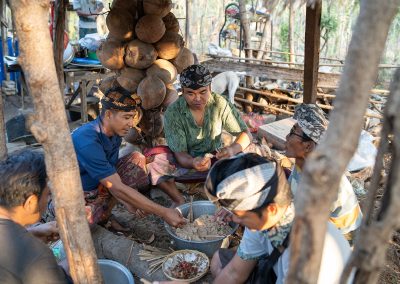Melanting Temple
Melanting Temple holds a special place among the Kahyangan Jagat temples in Bali and plays a significant role in the island’s temple culture. It is a place of worship dedicated to Ida Bhatari Melanting or Dewi Melanting, where people seek blessings for prosperity, fertility, safety, and success in their trading endeavors. The connection between Melanting Temple and the world of trade is evident, as it is closely associated with the establishment of local markets. Worshiping Dewi Melanting at this temple can be equated with honoring Bhatara Rambut Sedana or Dewa Kuwera, the deity associated with wealth and commerce. Situated in the Buleleng Regency, Melanting Temple is in close proximity to Pulaki Temple, Pabean Temple, Ida Mutering Jagat in Pemuteran, and Kerta Kawat. The histories of these temples are intricately intertwined.
Pemuteran Temple
Pemuteran Temple is one of the Dang Kahyangan Temples in Pemuteran Village, Gerokgak District, Buleleng. Pemuteran Temple is the center of dozens of supporting temples in the village. Its history dates back to ancient times, pre-dating the discovery of Batu Kursi Temple in 1984. The temple that was chosen as the dwelling place of Dang Hyang Nirartha is not only known as one of the destinations for spiritual travel. One of the distinguishing aspects of Pemuteran Temple is the presence of four types of tirta or holy water, each believed to possess its unique properties and functions. Moreover, the temple provides a sacred space for melukat, a ritual aimed at purifying the mind and soul, instilling spiritual clarity and tranquility in individuals.
Menjangan Island
Menjangan Island, situated just 5 miles northwest of Bali, is a gem within the West Bali National Park. The name “Menjangan” translates to “deer” or “kijang” in the local language, as the island is inhabited by wild deer and antelope. Remarkably, Menjangan Island is one of the few islands uninhabited by humans.
This island is a haven for diving enthusiasts, offering exquisite underwater natural beauty. With clear waters, stunning coral reefs, and pristine white sand beaches, it is a paradise for snorkeling and diving. Divers can explore captivating sites like Bat Cave, Eel Garden, and Coral Garden, with excellent visibility. Beyond water activities, Menjangan Island provides opportunities for sailing, swimming, and serene sunbathing on quiet shores. The island also features facilities like picnic areas and comfortable lounging spots.
West Bali National Park
The West Bali National Park is situated in the western region of the Indonesian island of Bali. Covering a vast area, the national park encompasses 19,002.89 hectares in total. This extensive expanse is divided into a terrestrial area spanning 15,587.89 hectares and a water area encompassing 3,415 hectares. It is regarded as one of the primary conservation areas in the region, dedicated to preserving the natural beauty and biodiversity of this unique part of Bali.
The West Bali National Park is a sanctuary of incredible natural diversity. Within its expansive area, a wide range of ecosystems coexists, including tropical rainforests, mangrove forests, swamp forests, and the magnificent coral reefs in the surrounding waters. This diverse landscape creates a haven for numerous species of flora and fauna, some of which are protected, such as deers, bulls, monkeys, mongoose, and a rich variety of birds and reptiles. Notably, the park is home to the Bali Starling (Leucopsar rothschildi), an exceedingly rare and endangered bird species, making it one of the world’s most elusive avian treasures.
Banjar Hot Spring
Banjar Hot Spring is one of Bali’s well-known hot spring attractions. It draws a steady stream of visitors, including local Balinese, domestic Indonesian tourists, and international travelers. Located in Banjar Village, approximately 5 kilometers from Lovina in northern Bali, Indonesia.
The Banjar Hot Spring, a renowned attraction in Bali, is believed to have a history that predates the Japanese colonial era in Indonesia. Originally constructed to serve as emergency baths during the Japanese colonial period, the hot spring water originates from the hot springs of Mount Batukaru.
Gili Putih
True to its name, which incorporates the term “gili,” meaning “island,” Gili Putih beach is a unique coastal gem featuring distinct white sandy terrain, giving it the appearance of an island. This charming Gili stretches approximately 500 meters along the shoreline, boasting crystal-clear waters with mesmerizing shades of blue. The gently sloping terrain of Gili Putih makes it an ideal spot for tourists seeking relaxation. The best times to explore Gili Putih are during the morning and afternoon. Visitors can witness the breathtaking sunrise before 5:30 am and capture the sunset after 3:30 pm, either by crossing the island or while strolling along its shores, taking photographs, or simply enjoying the tranquil surroundings.
Brahma Vihara Arama
Located in Banjar Village, approximately 22 kilometers from Lovina, Brahma Vihara Arama is a Buddhist temple complex in Bali, Indonesia. Established in 1969, it’s one of the largest and most important Buddhist places of worship on the island. The temple boasts stunning architecture that seamlessly blends Buddhist and Balinese styles, creating a serene and spiritual atmosphere. The complex is surrounded by meticulously maintained gardens featuring various plants, flowers, and beautiful Buddha statues. The visitors have the opportunity to leisurely explore the serene garden, immersing themselves in the peaceful atmosphere it provides.




